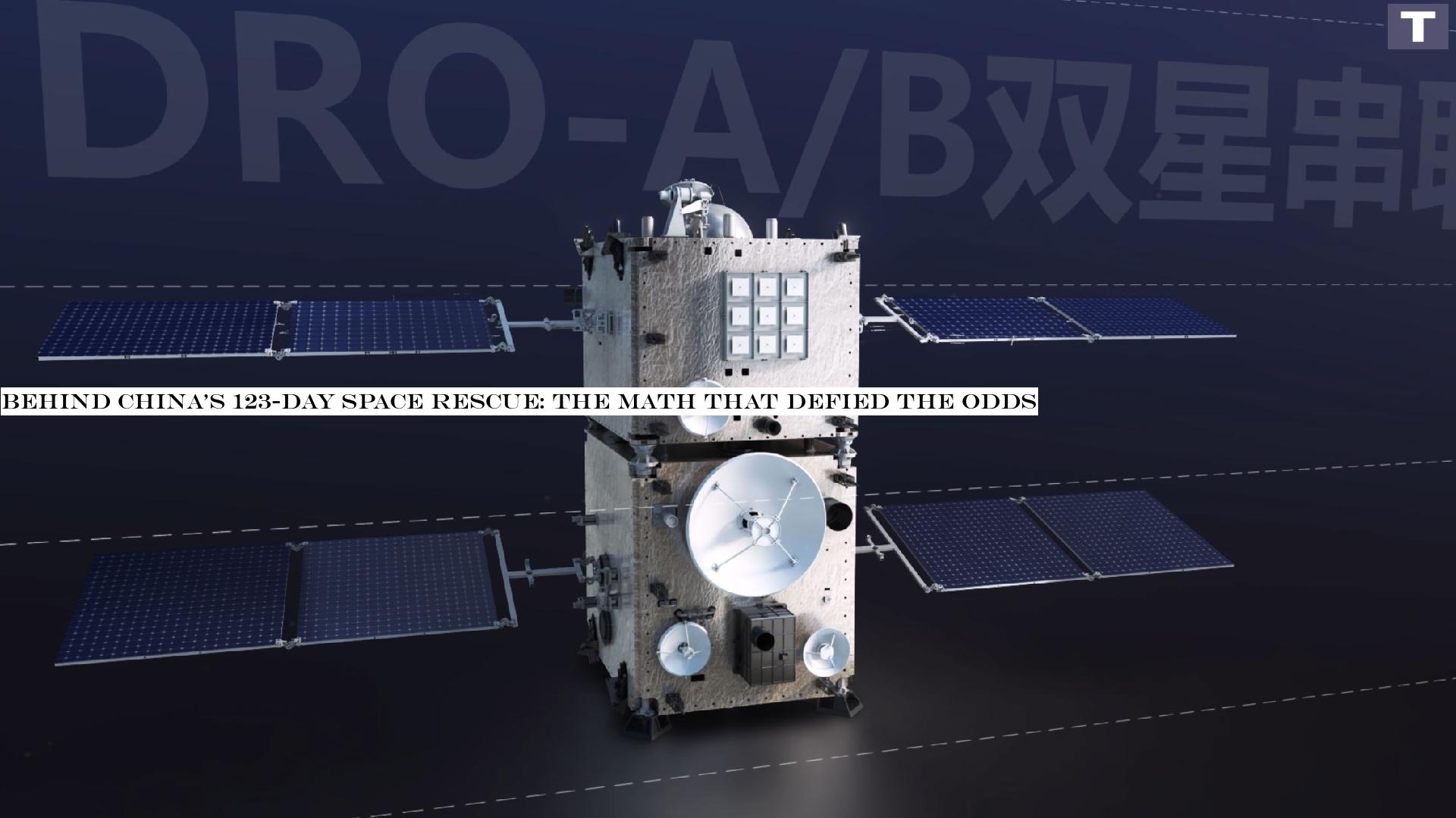INSUBCONTINENT EXCLUSIVE:
For the past few months, we have actually seen numerous reports about China possibly saving a pair of satellites after launch failure.Its
official; the organization behind that almost-failed area objective announced on Tuesday that after over 100 days of rescue efforts, the
satellites have gone into the target orbit and are working as designed.Whats more, the satellites being saved represent Chinas growing
interest about the huge area around Earth and the moon.Lets first appearance back to March 2024, when CGTN Digital reported on 2 Chinese
satellites that failed to enter orbit after abnormalities after liftoff
In the short story, we reported that efforts connected to the relevant disposal work are currently in progress
But we didnt realize then that the efforts would last for months, ultimately resulting in the satellites rescue.Caught by surpriseThe launch
problem also came as a surprise to many at the Technology and Engineering Center for Space Utilization (CSU), which leads the area mission
That was the very first launch mission I saw, and I didnt think about releasing glitch in the beginning, said Zhang Hao, whose group
discovered the final rescue route.The very first thing that came to Zhangs mind was to find out the status of the satellites
If the satellites were ruined, that would have been a waste of the years of effort that we put in and the money bought the objective
It would also be a psychological blow to the team, Zhang explained
Luckily, thats not the case, he informed CGTN Digital in an interview.When the satellites were found, they were spinning like an
out-of-control discus and were much closer to Earth than prepared
We divided into two groups
One team from another location manages the satellites thrusters to slow down the spinning
The other group, my group, computed the best path to move the satellites back on track
Although Chinese are often stereotyped as competent in math, determining the brand-new trajectory stayed a difficult task
Zhang kept up 2 nights straight, dealing with a solution
According to Zhang, with the aid of adrenaline, the group managed to discover a couple of plausible routes and presented them with objective
control.Harnessing gravitational forces to shoot into orbitAs the satellites were partly harmed throughout the glitched launch, they could
not take in sufficient sunshine to power a huge turn, presenting yet another retrieval challenge.To resolve the problem, the group used the
gravity of the Earth, moon, and sun like a slingshot to shoot the satellites to their location
If you dont want to take in much energy, you need to replace it with something else
We selected to consume more time in order to save energy, stated CSU researcher Mao Xinyuan, discussing why an activity that needs to have
taken simple days took 123 days in total.The very first maneuver was the most unsafe one
It took exactly 20 minutes, or 1,200 seconds, to finish
I got a growing number of stressed out as the clock ticked, said Zhang
I simply kept staring at the screen up until it stated typical
For the following maneuvers, I sort of got used to them and no longer got so stressed out, Zhang recalled
The infant phase is the hardest
Lighthouses for space navigationThe two rescued satellites bring an unique meaning for Chinas space program.Named DRO-A and DRO-B, the pair
deals with the previously launched DRO-L spacecraft to form a constellation covering roughly 100 million kilometers of area in between Earth
and the moon to provide Beidou-like navigation services for spacecraft
They will serve as lighthouses in area, Mao explained
(With these satellites in position), we can find a spacecraft in just three hours, unlike the 2 days or more with conventional, land-based
The constellation will likewise allow for ignored spacecraft piloting or autopilot
We simply provide it a target position, and the spacecraft will instantly find its method to the destination, stated Wang Wenbin, a CSU
scientist who participated in the mission.The new pilot system will assist China launch and preserve spacecraft in the huge area around
Earth and the moon, particularly the distant retrograde orbit (DRO), which is easy to get in, simple to keep, and easy to escape,
Its a natural area harbor, he informed CGTN Digital, adding that the group is in talks with Chinas manned area program to offer navigation
services for future lunar objectives.

